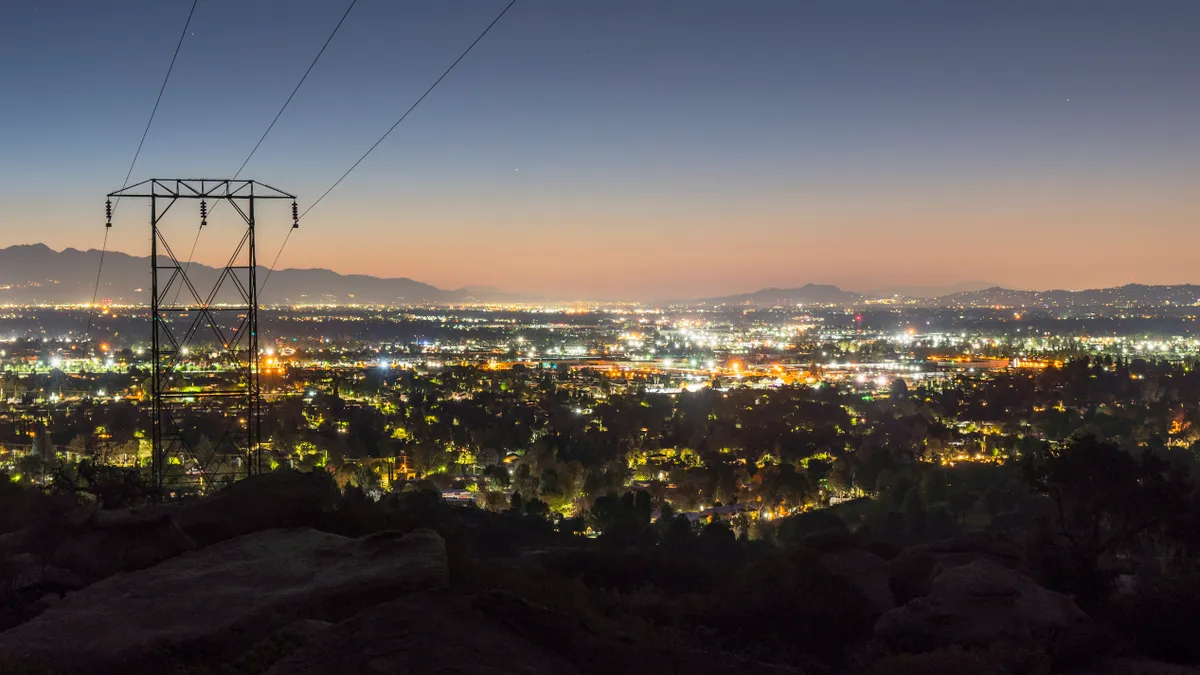Dive Brief:
- Roughly 50 million miles of new or replacement power lines must be installed by 2040 if governments around the world are going to reach their climate and clean energy commitments, according to a report released Tuesday by the International Energy Agency.
- Without sufficient grid investment and regulatory support for clean energy solutions, “grids risk becoming the weak link of clean energy transitions,” IEA warns.
- The report, “Electricity Grids and Secure Energy Transitions,” concludes large-scale transmission development and increased system flexibility and digitization are required to keep the Paris climate accord goals in reach.
Dive Insight:
IEA’s report includes a scenario — the Grid Delay Case — examining the potential impacts of slower grid development, relative to nations’ announced commitments. Failing to deliver grid infrastructure “in a timely manner" leads to cumulative carbon dioxide emissions between 2030 and 2050 almost 60 billion tons higher and the goals of the Paris climate agreement would be unachievable, according to the report.
The Paris agreement’s primary goal is to hold global average temperature increases below 2 degrees Celsius above pre-industrial levels and to pursue efforts that would limit increases to 1.5 degrees Celsius.
“Delays in grid investment and reform would substantially increase global carbon dioxide emissions, slowing energy transitions and putting the 1.5°C goal out of reach ... with a 40% chance of [global long-term temperature rise] exceeding 2°C,” according to the report.
The report recommends that governments back large-scale transmission projects to enable more renewable energy to reach consumers, and it urges grid developers and operators to look to digital solutions to enable grid flexibility through energy storage and demand response.
A draft U.S. Department of Energy report in February found the United States will likely need 47,300 GW-miles of new transmission by 2035 under a moderate load growth-high clean energy growth scenario.
There are at least 3,000 GW of renewable power projects waiting in grid connection queues globally, according to the IEA report. Electric grids “are becoming a bottleneck,” it said.
“This report shows what’s at stake and needs to be done. We must invest in grids today or face gridlock tomorrow,” IEA Executive Director Fatih Birol said in a statement.
A scenario examining announced national climate pledges shows that by 2050 nearly half of the world’s grid flexibility needs could be met by demand response and battery storage, according to the report. IEA measures flexibility needs as “the amount the rest of the system needs to adjust on an hourly basis to accommodate demand patterns and the variability of wind and solar output.”
“With the growing use of electricity for air conditioners, heat pumps, EVs, electrolysers and other potentially flexible sources of demand, there is potential for significant load shifting,” the report notes.
Scott McGaraghan, chief revenue officer at AutoGrid, a developer of virtual power plants, said the U.S. grid will need to operate in new ways and leverage the benefits of distributed resources, to meet climate goals.
“This includes deploying grid-enhancing technologies and unlocking the potential of demand response and energy storage through digitalization,” McGaraghan said.
The United States trails some countries, like Australia and Germany, in the development of a flexible grid, according to Luis D’Acosta, CEO of energy software company Uplight.
“Our state-by-state regulatory environment makes things more complex, and at times, slower-moving” than in other countries, D’Acosta said. “However, our potential is much greater because we have a larger population that equates to more potential [distributed energy resources], and we have a lot of land and different climates that lend themselves to a varied and powerful portfolio of demand flexibility solutions.”















